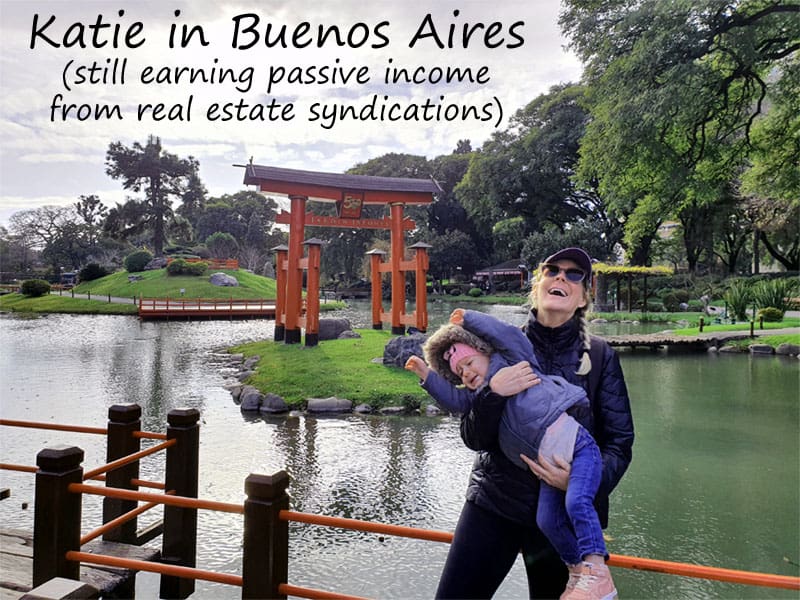
Billionaire investing mogul Warren Buffett once quipped that he wanted to pass on to his children “enough money so that they would feel they could do anything, but not so much that they could do nothing.” Another gem from the Oracle of Omaha.
We all want to help our kids gain a solid footing in life, including financially if we can. But, even if we could, simply handing them a check for $1 million on their 18th birthday doesn’t set them up for success. An unearned windfall like that in the hands of someone barely old enough to drive just begs for bad judgment, squandered money, and an entitlement mindset.
So how can we help our kids establish a solid financial footing while teaching them important concepts about money and building wealth?
Instead, consider a strategy to set your child up with a wealth-generating engine they can learn from at an early age and which will gradually build significant wealth for them for the rest of their lives. Using this strategy, by the time your child leaves home at age 18, you can help set them up to become multimillionaires with tax-free wealth at their disposal.
Step 1: Get Them an Income
In order for your child to qualify for a tax-sheltered investment account, they need to have taxable income to begin with.
If your kid already works a part-time or seasonal job over the summer or during school breaks, great!
If not, or if they only earn a little spending money this way, you can help them. Hiring your kid part-time to work at your business can do the trick.
Just be sure to mind the laws around employing minors. Legally you’ll have to treat your kid like you would any employee under age 18. The Fair Labor Standards Act (FLSA) sets the minimum age for most nonagricultural work at 14 years old and limits the number of hours they can work. And you can’t assign your kid to hazardous tasks like operating heavy machinery—no sending your teenager into the coal mines, even if you’re tempted sometimes.
You’re a real estate investor, right? Have your kid enter your receipts into your accounting software, conduct basic internet research, or even just shadow you while you do your day-to-day thing.
Some states require minors to obtain work permits or employment certificates from their school or the state’s labor department before they can begin working. You must keep appropriate records of their hours, the tasks they perform, and their pay. The law requires you to pay them at least minimum wage, but how generously you compensate them for their time is up to you.
The key is to get their annual taxable income to the $6,500 threshold. That’s the maximum they can contribute to the tax-sheltered account they need for this endeavor.
Step 2: Invest in a Real Estate Syndication Through a Self-Directed Roth IRA
Now for the hard(-ish) part. Your child will need a self-directed Roth IRA in their name. They need this account type specifically because normal Roth IRAs limit the types of investments you can make to common securities, and we have something a little fancier in mind.
Most major IRA providers don’t offer self-directed IRAs (SDIRAs), so you need to find a qualified custodian that offers the types of investments you want—in this case, real estate. Consider choosing an established custodian like Equity Trust or uDirect IRA that offers real estate investing capabilities. Make sure to set it up as a Roth account, not a traditional SDIRA.
After you help your child open an account, they can fund it with the money they’ve earned from their work, just like with any brokerage account.
Here’s where the magic happens.
You can work with your child to use the money inside their self-directed Roth IRA account to invest in real estate. Investing in a real estate syndication works here as a passive investment for your kid with high potential returns. They don’t have to be anybody’s landlord and can still profit from both rental income and capital appreciation. The income generated and any capital gains realized get an extra boost thanks to the tax-sheltered nature of the account.
Because the account belongs to your child, they’ll need to instruct the custodian how they want to invest the funds. You can provide your kid a bit of coaching or talk to the custodian together.
Step 3: Reinvest for Compounding & Infinite Returns
With a Roth IRA, you pay taxes now but never pay them again on those funds, no matter how much they grow. Read: tax-free compounding and withdrawals in retirement.
That works wonders for doubling your kid’s money tax-free in a few years if they earn the typical 15-30% returns on their real estate syndication investments. But they can do even better if they invest for infinite returns.
You earn infinite returns when you get your initial investment money back, but keep your ownership in the asset. The classic rental investing example is the BRRRR strategy, where you buy a fixer-upper, renovate it to create equity, rent it out, and refinance it to pull your property down payment back out. You keep the property, collect rental cash flow, and the property appreciates — but you don’t have any of your own money tied up in it.
The same concept exists in passive real estate syndications. The general partner renovates the property (usually an apartment complex), then refinances it once renovations are completed and the higher rents have stabilized. You get some or all of your investment capital back, but you keep your ownership interest in the property. You keep collecting rental income distributions and your slice of the property keeps appreciating.
Meanwhile, you can reinvest your original investment capital in other properties. In other words, you can recycle the same investment money in multiple deals.
Think of it as compounding on steroids.
The Math to Millions
Setting this up for your child as early as possible can have a major, lifelong payoff for your progeny.
Imagine starting your child off at age 14 investing $6,500 annually for five years, giving them $32,500 in principal invested at age 18. Say you help them invest in a real estate syndication inside their self-directed Roth IRA and they earn 15% annually.
If your child never contributes another penny to the account and it passively earns 15% in the background for them, they’ll have more than $1 million before they turn 40, and almost $4 million by the ripe old age of 48.
|
Age |
Principal Invested |
Interest @15% Annual ROI |
Total Account Value |
|
14 |
$6,500 |
$0 |
$6500 |
|
15 |
$13,000 |
$1,045 |
$14,045 |
|
16 |
$19,500 |
$3,303 |
$22,803 |
|
17 |
$26,000 |
$6,968 |
$32,968 |
|
18 |
$32,500 |
$12,268 |
$44,768 |
|
19 |
$32,500 |
$19,465 |
$51,965 |
|
20 |
$32,500 |
$27,818 |
$60,318 |
|
21 |
$32,500 |
$37,515 |
$70,015 |
|
22 |
$32,500 |
$48,770 |
$81,270 |
|
23 |
$32,500 |
$61,834 |
$94,334 |
|
24 |
$32,500 |
$76,999 |
$109,499 |
|
25 |
$32,500 |
$94,601 |
$127,101 |
|
26 |
$32,500 |
$115,034 |
$147,534 |
|
27 |
$32,500 |
$138,750 |
$171,250 |
|
28 |
$32,500 |
$166,279 |
$198,779 |
|
29 |
$32,500 |
$198,234 |
$230,734 |
|
30 |
$32,500 |
$235,326 |
$267,826 |
|
31 |
$32,500 |
$278,380 |
$310,880 |
|
32 |
$32,500 |
$328,355 |
$360,855 |
|
33 |
$32,500 |
$386,364 |
$418,864 |
|
34 |
$32,500 |
$453,699 |
$486,199 |
|
35 |
$32,500 |
$531,857 |
$564,357 |
|
36 |
$32,500 |
$622,580 |
$655,080 |
|
37 |
$32,500 |
$727,887 |
$760,387 |
|
38 |
$32,500 |
$850,123 |
$882,623 |
|
39 |
$32,500 |
$992,009 |
$1,024,509 |
|
40 |
$32,500 |
$1,156,703 |
$1,189,203 |
|
41 |
$32,500 |
$1,347,873 |
$1,380,373 |
|
42 |
$32,500 |
$1,569,774 |
$1,602,274 |
|
43 |
$32,500 |
$1,827,347 |
$1,859,847 |
|
44 |
$32,500 |
$2,126,326 |
$2,158,826 |
|
45 |
$32,500 |
$2,473,367 |
$2,505,867 |
|
46 |
$32,500 |
$2,876,196 |
$2,908,696 |
|
47 |
$32,500 |
$3,343,783 |
$3,376,283 |
|
48 |
$32,500 |
$3,886,535 |
$3,919,035 |
Now imagine if instead they continue to contribute the maximum $6,500 per year into the account after they turn 18! In that case they’ll accumulate their first million before they turn 35. And by age 48, they’ll end up with almost $7.5 million in their Roth IRA—all of it tax free in retirement.
|
Age |
Principal Invested |
Interest @15% Annual ROI |
Total Account Value |
|
14 |
$6,500 |
$0 |
$6500 |
|
15 |
$13,000 |
$1,045 |
$14,045 |
|
16 |
$19,500 |
$3,303 |
$22,803 |
|
17 |
$26,000 |
$6,968 |
$32,968 |
|
18 |
$32,500 |
$12,268 |
$44,768 |
|
19 |
$39,000 |
$19,465 |
$58,465 |
|
20 |
$45,500 |
$28,863 |
$74,363 |
|
21 |
$52,000 |
$40,818 |
$92,818 |
|
22 |
$58,500 |
$55,738 |
$114,238 |
|
23 |
$65,000 |
$74,103 |
$139,103 |
|
24 |
$71,500 |
$96,464 |
$167,964 |
|
25 |
$78,000 |
$123,465 |
$201,465 |
|
26 |
$84,500 |
$155,851 |
$240,351 |
|
27 |
$91,000 |
$194,489 |
$285,489 |
|
28 |
$97,500 |
$240,383 |
$337,883 |
|
29 |
$104,000 |
$294,699 |
$398,699 |
|
30 |
$110,500 |
$358,792 |
$469,292 |
|
31 |
$117,000 |
$434,232 |
$551,232 |
|
32 |
$123,500 |
$522,845 |
$646,345 |
|
33 |
$130,000 |
$626,748 |
$756,748 |
|
34 |
$136,500 |
$748,399 |
$884,899 |
|
35 |
$143,000 |
$890,651 |
$1,033,651 |
|
36 |
$149,500 |
$1,056,815 |
$1,206,315 |
|
37 |
$156,000 |
$1,250,735 |
$1,406,735 |
|
38 |
$162,500 |
$1,476,874 |
$1,639,374 |
|
39 |
$169,000 |
$1,740,411 |
$1,909,411 |
|
40 |
$175,500 |
$2,047,357 |
$2,222,857 |
|
41 |
$182,000 |
$2,404,692 |
$2,586,692 |
|
42 |
$188,500 |
$2,820,514 |
$3,009,014 |
|
43 |
$195,000 |
$3,304,226 |
$3,499,226 |
|
44 |
$201,500 |
$3,866,743 |
$4,068,243 |
|
45 |
$208,000 |
$4,520,731 |
$4,728,731 |
|
46 |
$214,500 |
$5,280,896 |
$5,495,396 |
|
47 |
$221,000 |
$6,164,306 |
$6,385,306 |
|
48 |
$227,500 |
$7,190,773 |
$7,418,273 |
Final Thoughts
Getting your children invested in private equity real estate syndications in a tax-sheltered account offers them a huge leg up without many of the downsides of large, lump-sum gifts. An 18-year-old who has a self-directed Roth IRA with less than $50,000 in it won’t feel like they can goof off in life and never have to work. At the same time, that seed you’re planting today will set them up for a very comfortable retirement even if they never invest another penny.
Far from spoiling them, helping your kid earn an income for themselves and set up a long-term investment like this teaches many valuable lessons. It gives your kids an early jump on their career by giving them some work experience before they finish high school. They might even discover a type of work they love!
They’ll learn from first-hand experience how to invest, and their early returns should help get them excited about investing for the long term. Plus, helping them to set up a tax-optimized account and showing them the power of compounding gives them knowledge that will pay them dividends (literally!) throughout their entire lives.
What better way to set your kids up for success before they even leave home?♦
How do you plan on helping your kids become millionaire real estate investors?
More Real Estate Investing Reads:
About the Author

Jim Cirigliano has more than 15 years of experience writing original content for consumer and business publications in industries including personal finance, construction and manufacturing, nature and outdoors, and science and biotechnology. He operates Spot Check Editorial, which produces world-class content that engages readers and customers.



























A children’s book about real estate will be an amazing hit!
Love it Sparkle!
I’m actively educating and motivating my kids to read, attend seminars, and learn from their parents. We’ll see if any of it sticks…
Haha, keep us posted Harper!
Like the concept. Going to brainstorm some ideas on implementation
Glad to hear it Bryant!
Fascinating strategy
I think so too Seri!
As a parent, I wholeheartedly agree with Warren Buffett’s perspective on providing our children with enough resources for empowerment without creating dependency. It’s crucial to their growth and independence while instilling essential life skills and financial responsibility.
Amen TML!
Achieving taxable income for kids and reaching the $6,500 threshold is tough but doable. Let’s help them become resourceful and succeed.
I certainly want my own daughter growing up to be resourceful!
I love the concept. I worry about my kids growing up entitled though. In some ways the financial tactics are easier than the parenting nuances.
Agreed Mabin!
I find this fascinating! It’s like giving them (kids) a valuable product with the potential for significant returns. Just remember that there are risks involved, and educating our children about financial responsibility is essential.
Absolutely. Teaching risk management is one of the lessons that real estate investing can offer kids.